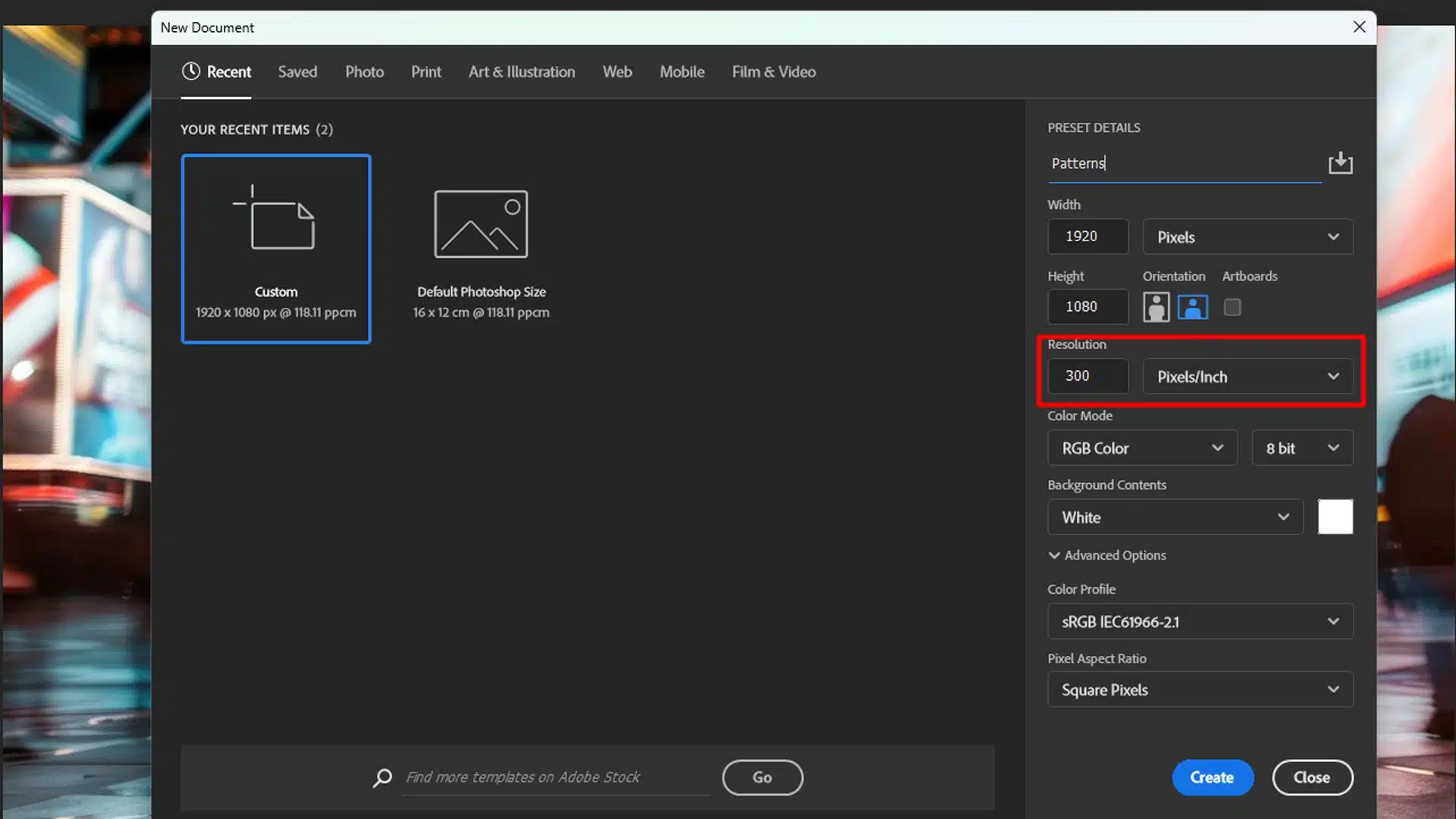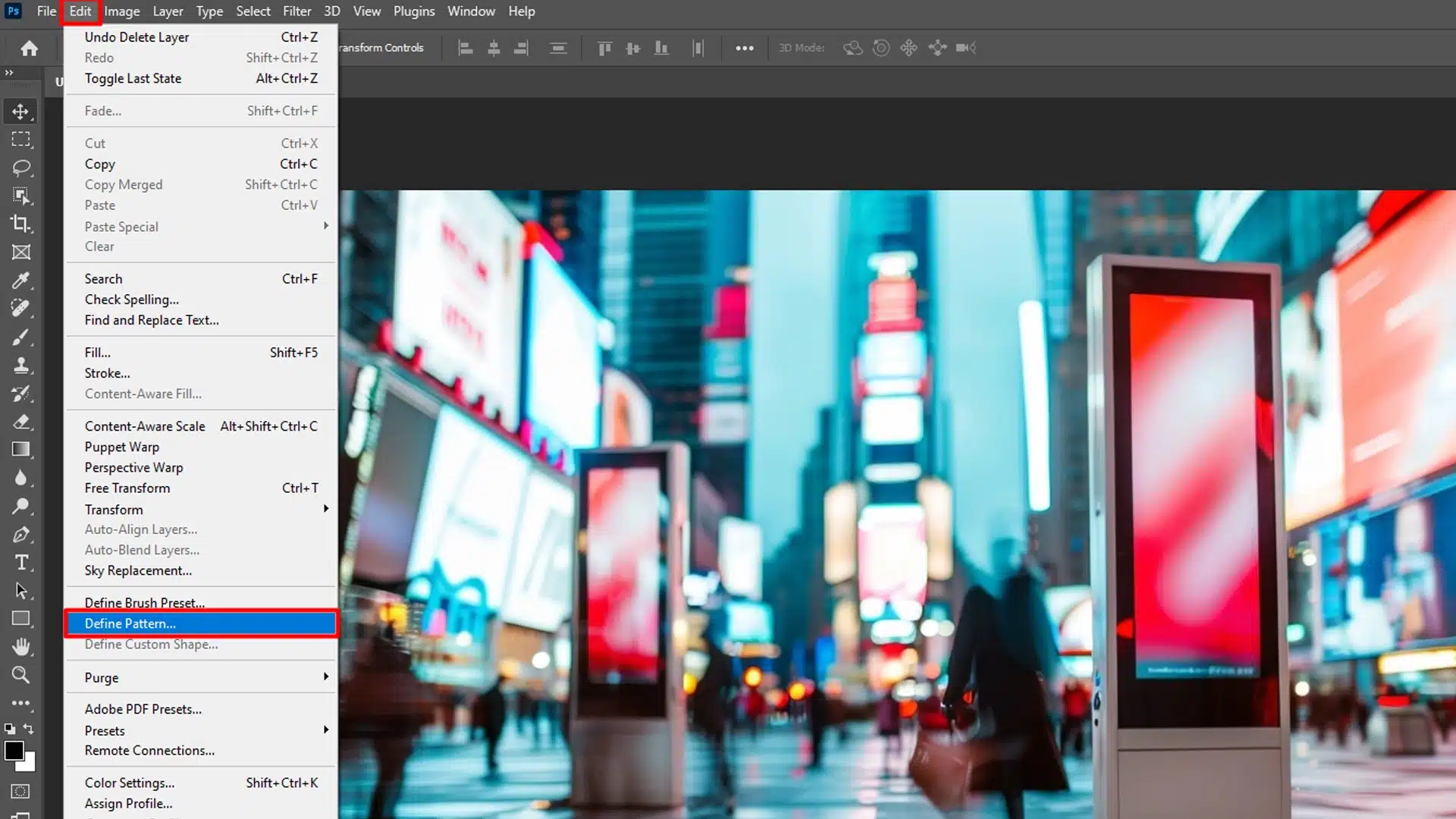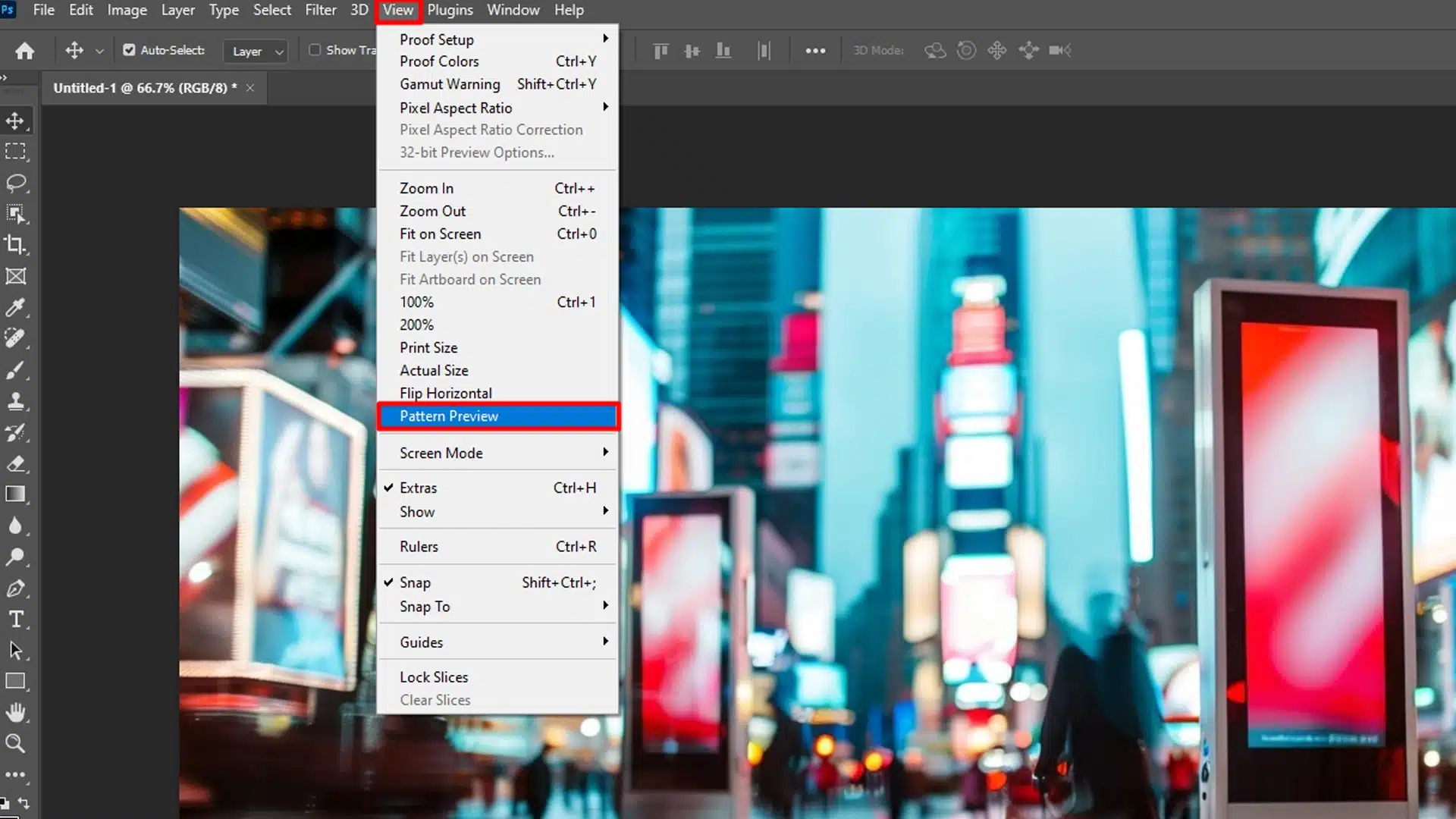
Creating a stunning Photoshop pattern often starts with the right tools and techniques.
When it comes to adding intricate details and textures, nothing beats a well-crafted Photoshop pattern.
In this article, I’ll guide you through the essential steps to create and utilize Photoshop patterns that can elevate your projects to a professional level.
Keep reading to unlock the secrets to mastering this versatile tool!
Table of Contents
Creating a Custom Pattern in Photoshop
Designing your own custom pattern in Photoshop is a powerful way to add unique elements to your projects.
This process begins with setting up your document and defining its size and resolution.
Once your canvas is ready, you can start designing the pattern by using various shapes, lines, and textures.
Setting Up Your Document

To start, open Photoshop and create a new document. You define the size based on your needs.
Larger documents offer more detail, while smaller ones are easy to manage.
Focus on the settings like resolution and color mode.
Typically, 300 dpi and RGB color work well. This sets the foundation for your custom pattern.
If you are a photographer, and want to make custom pattern in photoshop, understanding composition rules in photography is crucial for crafting visually appealing images.
Similarly, a custom pattern enhances your designs by adding unique textures and depth.
Designing Your Pattern
Now, let’s get creative. Use various design elements to shape your pattern.
Lines, shapes, and textures can add uniqueness.
Each element should flow seamlessly into the next. Making a your own personal pattern packs, so you can reuse and repeat pattern.
When designing your pattern in Photoshop, using the shape tool can significantly simplify the process.
This tool helps create precise shapes and elements for your patterns.
You can make geometric pattern in photoshop with smart object and then save them in photoshop.The patterns are saved in a pat file format.
Keep the elements within the borders to create seamless patterns.
Snap to Grid is useful here. Also, you might want to use the paint bucket tool to fill in larger areas quickly.
Using the Define Pattern Dialog Box

Once you’re satisfied, it’s time to save. Go to Edit > Define Pattern. The dialog box lets you name your photoshop pattern.
Choose something descriptive so you can easily find it later.
This step saves your design as a new pattern in Photoshop. From here, you can use it in other projects by selecting it from the Preset Patterns menu.
Its like having a pattern packs of your new patterns and you can easily repeat pattern to another entire image.
Pro Tip: Preview the pattern before saving it. Use the Pattern Preview feature to ensure it tiles correctly and appears as intended before finalizing.
Using the Pattern Preview Tool
Photoshop patterns unlock endless designs and textures for your projects.
In this guide, let’s explore the Pattern Preview Tool. It’s a game-changer for creating seamless designs with minimal fuss.
Activating Pattern Preview

First, open Photoshop and create your photoshop document. Adjust dimensions and resolution as needed.
To activate Pattern Preview, go to View > Pattern Preview. This automatically select
the preview mode.
Now, anything you draw inside the document will repeat in tiles, allowing you to visualize how it looks as a seamless pattern.
Adjusting Your Pattern
Creating a Photoshop pattern involves using various tools. Let’s dive in:
- Using shapes, lines, or other elements, make a graphic design to your photoshop pattern. Focus on symmetry.
- For quick changes, make use of the Snap to Grid feature found under View options. It ensures all elements align properly.
- To fill areas quickly, use the paint bucket tool. This helps to maintain consistency.
- Test modifications by adjusting elements slightly. This allows you to perfect the look.
- When happy with your design, save it by going to Edit > Define Pattern. Name it for easy access later.
When adjusting your pattern in Photoshop, it’s essential to know how to add shapes effectively. Incorporating new shapes can refine and enhance your pattern.
Applying Photoshop Patterns
Creating patterns in Photoshop is a fun process that adds visually compelling elements to your designs.
Let’s dive into some practical ways to use them.
Using the Pattern Fill Tool

The Pattern Fill is one of the essential tools in Photoshop that offers a simple way to insert a pattern into your design:
- Start by opening your image.
- Go to the menu bar and select Edit > Fill.
- In the Fill dialog box, choose Pattern from the drop-down menu.
- To choose a specific pattern, click on the custom pattern panel. Here, you have access to pre-installed patterns or any that you've created.
- Once selected, click OK. Your pattern appears in the chosen area of your image.
You can always undo or adjust as needed.
Pro Tip: Utilize the essential tools in Lightroom for a more proficient workflow as well!
Applying Patterns to Layers
Adding patterns directly to layers offers more flexibility:
- Right-click on the layer you wish to affect and choose Blending Options.
- From there, select Pattern Overlay.
- This opens up a range of settings like scale and opacity, which lets you customize how the pattern appears.
- Adjust these settings to fit your design needs. Once you're satisfied, click OK.
You can easily manage and adjust layers without changing the original image. This approach is especially useful for creating repeat-patterns.
Pro Tip: Experiment with combining different Photoshop pattern packs to find unique textures and styles.
Use the power of blending options to craft striking backgrounds and designs.
Ensure you make the most out of Photoshop’s capabilities and use Photoshop shortcuts as well as Lightroom shortcuts to be more efficient with time.
For more advanced techniques, consider exploring the content-aware fill in Photoshop to seamlessly blend patterns with the rest of your design.
Practical Tips for Using Adobe Photoshop
When working with Adobe Photoshop, understanding the various tools and techniques can significantly enhance your efficiency and output
This overview will help you choose the right tools for your projects, ensuring you make the most out of Photoshop’s capabilities.
| Feature | Photoshop Tool/Technique | Advantages | Disadvantages |
|---|---|---|---|
| Layer Management | Layers | Easy editing and adjustments; non-destructive | Can become complex with many layers |
| Smart Objects | Convert to Smart Object | Retains quality when resizing; non-destructive edits | Larger file sizes |
| Keyboard Shortcuts | Shortcuts | Speeds up workflow; improves efficiency | Requires memorization |
| Content-Aware Fill | Content-Aware Fill | Seamlessly removes unwanted elements | May require manual adjustments |
| Pattern Preview Tool | Pattern Preview | Visualizes pattern tiling; ensures seamless design | Can be resource-intensive on large files |
Mastering tools in Photoshop involves practice.
Here are some tips:
- Layers Management: Work using layers. It makes editing and adjustments simpler.
- Smart Object: Convert elements to smart objects to retain quality while resizing.
- Shortcuts: Learn keyboard shortcuts. They enhance speed and efficiency.
- Content-Aware Fill: Utilize the Content-Aware Fill feature to seamlessly remove unwanted elements from your design.
Pro Tip: Always preview your photoshop patterns using the Pattern Preview Tool before finalizing to ensure they tile perfectly. This saves time and enhances the final result.
Troubleshooting Common Issues
Even with careful design, you might encounter problems when working with patterns in Photoshop.
This section addresses some common issues you might face, such as patterns that don’t tile seamlessly or aren’t showing up as expected.
We’ll cover practical solutions to help you resolve these problems and ensure your patterns look professional.
Pattern Not Seamless
Patterns not aligning? It happens. Your pattern may have edges that don’t blend. First, verify your pattern’s edges match up. Zoom in for a closer look. Use the Offset filter to check. Go to Filter > Other > Offset.
Adjust horizontal and vertical settings to see seams. If visible, use the clone stamp tool. Blend those imperfections.
Avoid large jumps in color or texture. Blending is key. You want a smooth transition between repeated elements.
Sometimes, a slight blur on the edges helps. Apply a mask and use a soft brush to paint black on the seam areas.
This hides rough transitions.
Patterns Not Showing Up
A common frustration, your photoshop patterns isn’t appearing?
Don’t stress. Let’s work through it.
Ensure you’re on the right layer. Patterns apply to the selected layer. If unsure, double-check the Layers panel.
Another point: check opacity settings. Layer opacity might be too low. Increase it and see if the patterns shows.
If still missing, review blending mode. Sometimes, the mode impacts photoshop pattern visibility.
Normal is auto select but toggle between options such as Multiply, or Overlay. See what works.
Also, make sure your new layer isn’t locked. A locked layer can prevent changes. Verify it by checking the padlock icon in the Layer panel. Unlock it if necessary.
Still not there? Try reapplying the pattern. Select the area, go to Edit > Fill, choose Pattern, and pick your desired pattern. Make sure “Preserve Transparency” is unchecked.
Finally, it might be worth restarting Photoshop. Occasionally, glitches happen. A restart often clears these up.
Patterns can be tricky. But with these tips, you’ll troubleshoot effectively!
Pro tip: Keep your patterns organized in photoshop pattern packs. It saves time and keeps you efficient.
Frequently Asked Questions

How do you make a pattern in Photoshop?
- Open a new file and design your unique pattern.
- Select the area of the pattern using the Marquee Tool
- Go to Edit, then Define Pattern, and save your pattern with a name.
Where to find patterns in Photoshop?
- Go to Edit and then Presets.
- Select Preset Manager and choose Patterns from the dropdown.
- Here, you can see all the preloaded and custom patterns.
How to make a repeat pattern in Photoshop?
- Create the initial element of your pattern and place it on the canvas.
- Use the Clone Stamp Tool to duplicate elements, ensuring they align seamlessly.
- Define the pattern by selecting Edit, then Define Pattern.
How to create a hatch pattern in Photoshop?
- Draw the lines or shapes for your hatch using the Line Tool or Brush Tool.
- Arrange them in the desired hatch pattern style.
- Follow the steps to Define Pattern under the Edit menu to save your hatch design.
Conclusion
In conclusion, working with Photoshop patterns has truly enhanced my design projects.
By following the steps outlined in this guide, you can create, use, and troubleshoot Photoshop patterns effectively.
I’ve found that mastering these techniques really helps in making my designs stand out.
If you want to dive deeper into Photoshop or Lightroom, check out my Photoshop Course and Lightroom Course.
For the latest tools, consider Adobe Photoshop and Adobe Lightroom. With these resources, you’ll be set to create designs that truly pop.
Happy designing!
Read more about Photoshop:
















